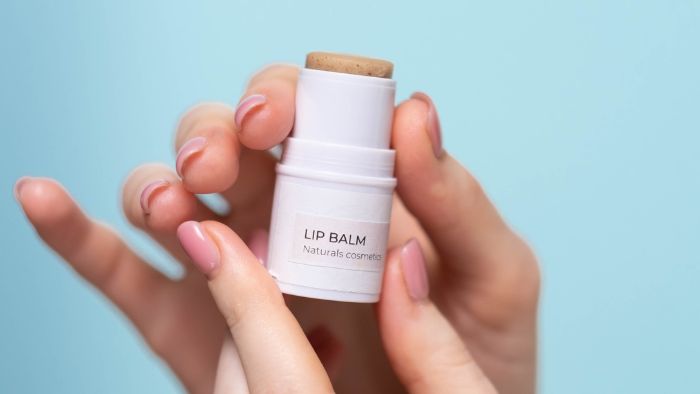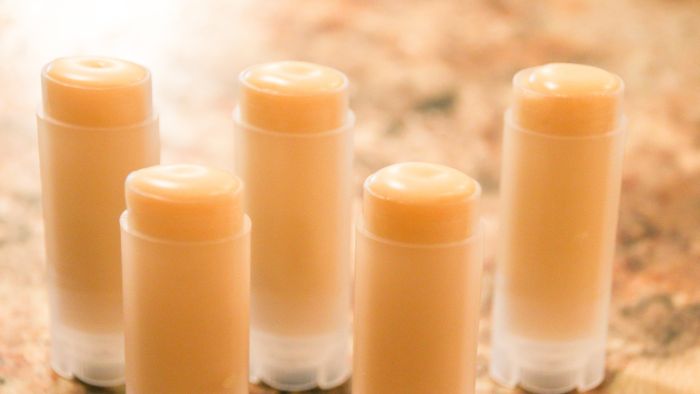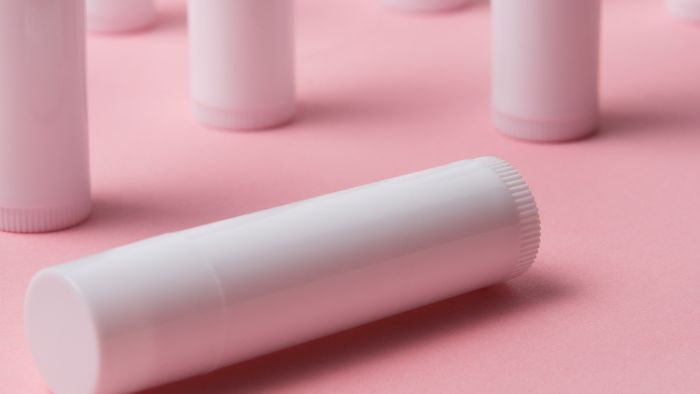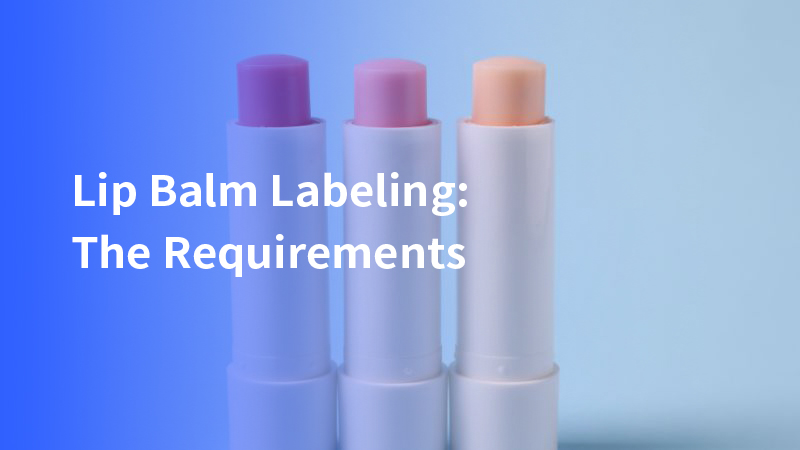Lip balm labeling should be simple since it involves a well-established product that already has typical formulations, packaging, and market segments. You can even get a vial labeler for small tubes, requiring little initial adjustment.
However, the regulations around labeling can be complex. They might demand specific wording to comply with legal standards, merging both drug and cosmetic labeling requirements. Managing these regulations within the limited space of a lip balm tube is challenging.
How do you combine all these elements into a compliant and appealing label? Start by familiarizing yourself with the specific labeling requirements for lip balms.

Cosmetic, drug, or both?
Labeling of products is governed by the Federal Food Drug and Cosmetic Act (FD&C Act) and the Fair Packaging and Labeling Act (FP&L Act). These laws classify cosmetics as products intended for beautification without altering the body’s structure or functions. Products that influence the body’s structure or functions are categorized as drugs.
Various personal care items may be classified as both cosmetics and drugs according to FDA guidelines. For instance, while sunscreen lotion is primarily used for skin protection from UV light, it also serves as a moisturizing skin cream.
Similarly, toothpaste generally qualifies as a cosmetic, but when fluoride is added, it doubles as a drug due to its cavity-prevention properties. Soaps might fit into either category or belong to a distinct “soap” category based on their ingredients and marketed benefits.
Typically, standard lip balm is considered a cosmetic. However, if the lip balm contains active ingredients that heal, protect, or contain substances like sunscreen, it then qualifies as both a drug and a cosmetic.
Moreover, the addition of flavors, tints, or therapeutic essential oils can further blur the lines between cosmetic and pharmaceutical applications, necessitating careful adherence to regulatory standards to ensure proper classification and labeling.
Complying with FDA labeling standards for cosmetic lip balms
Lip balms, unless otherwise specified by drug regulations, must adhere to FDA labeling regulations applicable to cosmetics.
The Principal Display Panel (PDP), prominently located on the front of the packaging, is required to feature a statement of identity and the quantity of the product. For round containers, the PDP should encompass 40% of the product’s height multiplied by its circumference. In the case of rectangular containers, the PDP must cover one complete side.
The statement of identity includes both the product name and its common name. While incorporating ingredients into the common name is permissible, it is mandatory to include all principal ingredients that confer uniqueness to the product. For instance, a lip balm containing peppermint and shea butter could be labeled as “lip balm” or “lip balm with shea butter and peppermint,” but it cannot be simply labeled as “peppermint lip balm” unless peppermint is the only distinctive ingredient.
Since lip balm is a solid product, the net contents within the container should be listed by weight, including both customary and metric units. The typeface for the net weight and other critical label information must have a minimum height of 1/16 inches if the product’s label is less than 5 square inches in area, which is typical for standard lip balms.

Furthermore, manufacturers must also ensure that any additional claims made on the packaging, such as “moisturizing” or “SPF protection,” are supported by appropriate evidence and comply with both cosmetic and drug labeling standards if applicable. This ensures consumer safety and product efficacy, aligning with regulatory expectations.
Ingredient and Information Labeling for Lip Balms
Every lip balm container must have one dedicated panel for listing ingredients. Ingredients should be enumerated in descending order by weight, with colorants consistently positioned at the end of the list regardless of their quantity.
All ingredients must be named according to the standard terminology set forth by the International Nomenclature of Cosmetic Ingredients. The minimum typeface size for ingredient listings on small labels should be 1/32 inches in height, and for labels larger than 12 square inches, it must be at least 1/16 inches.
The information panel, typically located on the back of the outer container, should include directions for safe use, applicable warning statements, and manufacturer information such as the company name and content details. The typeface for warning statements should not be smaller than 1/16 inch.
The size of the other text should be proportionate to the size of the panel, measured against the height of a lowercase “o.” The specific requirements for typeface dimensions can be referenced in the FTC regulations under 21 CFR 701.2(a) (b), 701.3(b), 701.11(c), 701.13(i), and 740.2(b).
Manufacturer information on the label must feature the name and contact information of the manufacturer, formatted according to FTC regulation 16 CFR 500.5(c). Federal regulations also allow for the omission of the address if it is available in a widely published resource that is easy to access. This generally means that if the manufacturer’s website is listed on the packaging and contains the street address, the physical address need not be repeated on the label, provided it is not a post office box address.
For lip balms packaged in both inner and outer containers, such as tubes in boxes or cards, labeling requirements differentiate between the two. The outer container may feature a principal display panel, while the inner container need only display the product name on its front panel.
The information panel on the inner container must still include safe usage directions, warnings, manufacturer details, and the net weight of the product. This structured approach ensures clarity and compliance across all packaging components.
Comprehensive labeling requirements for medicated lip balms
Active Ingredients
This section should clearly list any medicinal components in the lip balm along with their respective quantities, highlighting their role as the active therapeutic agents.
Intended Uses
It is essential to specify the intended therapeutic benefits, such as “temporarily protecting and helping relieve chapped or cracked lips,” to inform users of the product’s purpose.
Warnings
The warning section should adapt based on the balm’s ingredients and usage. A universal warning like “For external use only” is mandatory. Products containing sun-protective elements must include additional warnings regarding sun exposure.
Directions
This part of the label provides users with clear instructions on how to properly apply and use the lip balm to ensure effectiveness and safety.
Other Information
Additional relevant information for users, including storage recommendations and legal disclaimers, should be included here to guide proper usage and handling.
Inactive Ingredients
All non-medicinal components, such as essential oils, perfumes, color additives, and dyes, should be listed from the heaviest to the lightest. This transparency helps consumers identify potential allergens or components they may wish to avoid.

This crucial information must be prominently displayed on the outer packaging. However, the regulations regarding inner packaging are less definitive. There exists a “temporary” exemption under the Drug Facts Rule for convenience-sized packages, which omits the need for a complete Drug Facts label if the container holds no more than two adult doses, and labeling it fully would occupy over 60% of the surface area.
Despite the long-standing nature of this exemption, the FDA has yet to finalize regulations detailing the conditions for label exemptions on smaller packaging.
Typically, the complete Drug Facts label is omitted on smaller, inner containers of medicated cosmetic products regardless of dosage size. Most medicated lip balms are packaged with hanging cartons or blister cards that feature the Drug Facts on the back, while the tubes themselves only display the product name, weight, and usage directions. This approach balances regulatory compliance with practical packaging design.
Make your lip balm labeling wonderful with LMS
If you’re looking for a better way of lip balm labeling, contact LMS. We have robust labeling equipment and a range of cosmetic labeling and pharma labeling solutions.
